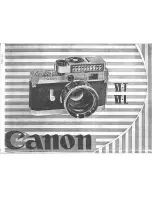
43
Testing for Cone Error
Eliminating Cone Error
APPENDIX I : ELIMINATING CONE ERROR
• If the pointing accuracy is still good, then the mount system has small or no cone error.
• If the pointing accuracy becomes poor, and most of the error is on the R.A. axis (that is,
the object can be brought back to the center of the eyepiece using the left or right di-
rection keys), it means that the cone error of the telescope-mount system is quite large.
If the telescope’s optical axis is not perpendicular to the declination axis of the equatorial
mount, then there is cone error in the telescope-mount system. The cone error might lower the
accuracy of locating an object or the accuracy of the Polar-Alignment process.
1.
Perform a precise polar alignment on the equatorial mount, and then perform a two-star
alignment. The alignment stars should be located on the same side of the meridian and
their declination deviation should be within 10 to 30 degrees.
2.
Use the SynScan hand control to locate a few objects on the same side of the meridian as
the alignment stars. The pointing accuracy should be quite good.
3.
Use the SynScan hand control to locate a few objects on the other side of the meridian as
the alignment stars.
1.
Rotate the R.A. axis to level the counterweight shaft.
2.
Center the Polaris in the polar scope.
3.
Point the telescope to the Polaris, rotate the Dec. axis to bring the Polaris as close as pos-
sible to the center of the finder scope or the telescope’s eyepiece.
4.
Fine tune the azimuth and latitude of the mount to center the Polaris in the telescope’s
eyepiece.
5.
Rotate the R.A. axis 180 degrees. (the counterweight shaft should be leveled and pointed
to the other side of the mount). If the Polaris can be put to the center of the eyepiece by
rotating the Dec. axis only, it means the cone error is small and no further adjustment is
needed; otherwise, continue to the following steps.
6.
Rotate the Dec. axis to bring the Polaris as close as possible to the center of the finder
scope or the telescope’s eyepiece.
7.
Slightly push the eyepiece end of the telescope in a HORIZONTAL direction while looking
into the eyepiece, find the direction which will bring the Polaris closer to the center of the
eyepiece. In this way, a user can determine the direction in which you should re-position
the telescope on the saddle or the mounting bar to reduce the cone error.
8.
Use a shim (or other method) on the proper side of the saddle or the mounting bar to raise
the telescope. Look into the eyepiece while applying the shim. Reduce the deviation be-
tween the Polaris and center of the eyepiece to HALF.
9.
Repeat
Steps 4 and 5
to check whether the cone error is acceptable, repeat
Steps 6, 7 and
8
if necessary.
Tips:
• It is recommended to use a reticle eyepiece and align the track of the Dec. movement with
one of the lines of the reticle.
• This adjustment can be done in day time by using a distance point object to replace the
Polaris.




































